Embibe Experts Solutions for Chapter: Kinematics, Exercise 6: BEGINNER'S BOX - 6
Embibe Experts Physics Solutions for Exercise - Embibe Experts Solutions for Chapter: Kinematics, Exercise 6: BEGINNER'S BOX - 6
Attempt the practice questions on Chapter 4: Kinematics, Exercise 6: BEGINNER'S BOX - 6 with hints and solutions to strengthen your understanding. Beta Question Bank for Medical: Physics solutions are prepared by Experienced Embibe Experts.
Questions from Embibe Experts Solutions for Chapter: Kinematics, Exercise 6: BEGINNER'S BOX - 6 with Hints & Solutions
Calculate the acceleration of the system, tension in the string and thrust on the pulley in terms of g for the situation shown in following diagram.
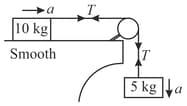
Two blocks of masses 8kg and 4 kg respectively are connected by a string as shown. Calculate their accelerations if they are initially at rest on the floor, after a force of 100N is applied on the pulley in the upward direction (g = 10 m/s2)

graph of two particles and are shown in fig. Find the ratio of velocity of to velocity of .
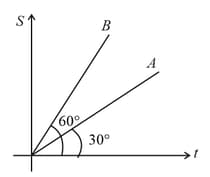
Position-time graph of a particle in motion is shown in fig. Calculate -
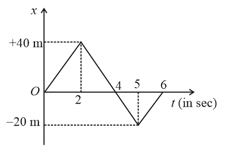
Total distance covered :
Position-time graph of a particle in motion is shown in fig. Calculate -
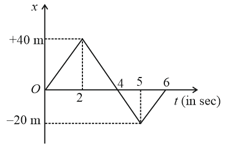
Displacement :
Position-time graph of a particle in motion is shown in fig. Calculate -
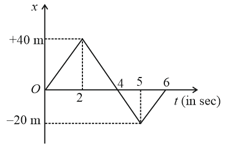
Average speed :
Position-time graph of a particle in motion is shown in fig. Calculate -
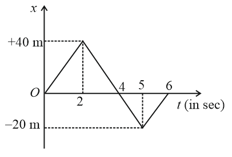
Average velocity :
The position-time graphs for two children and returning from their school to their homes and respectively are shown in fig. Choose correct entries in the brackets below :
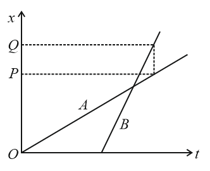
(a) lives closer to the school than
(b) starts from the school earlier than
(c) walks faster than
(d) and reach home at the (same different) time
(e) overtakes on the road (once/ twice).
